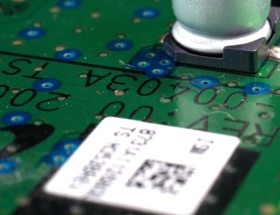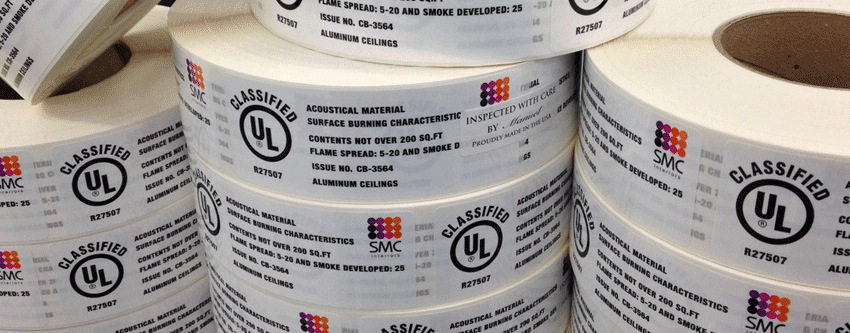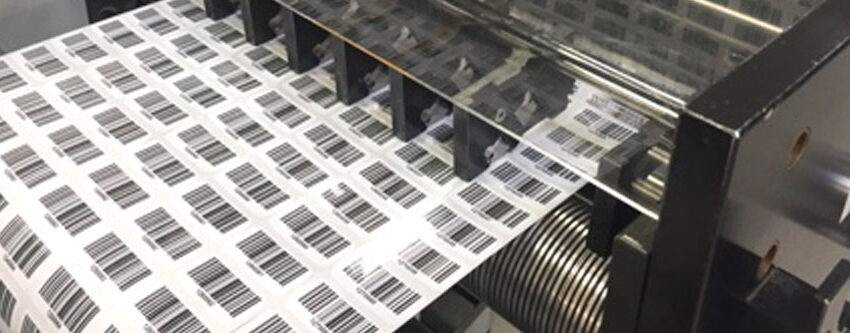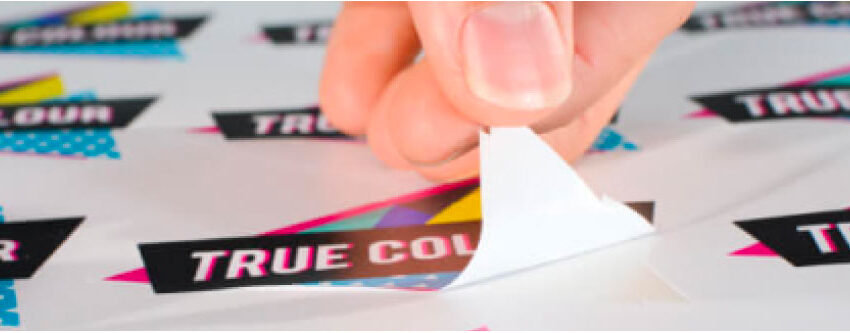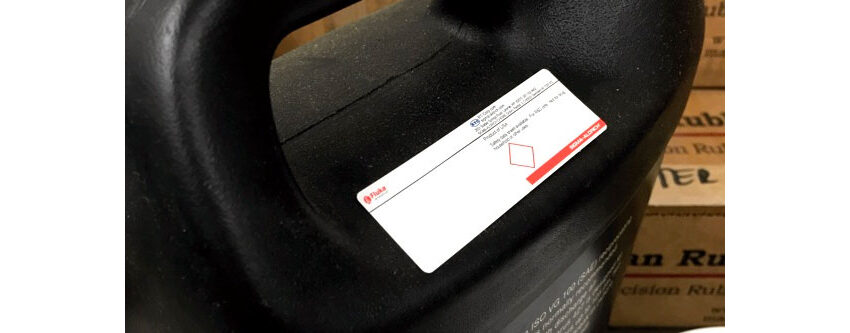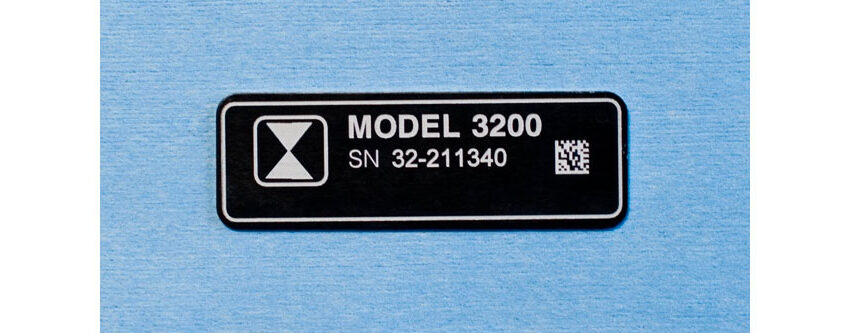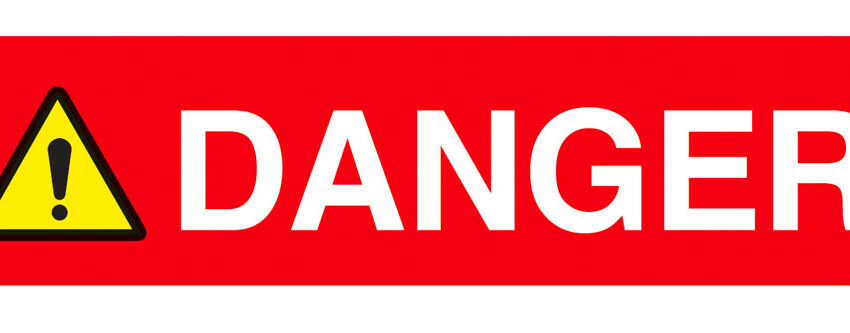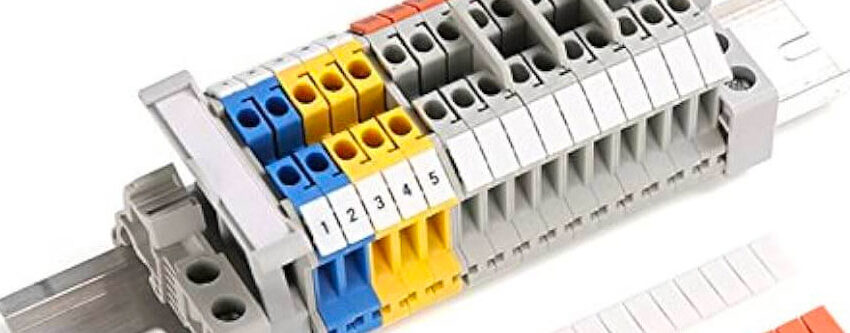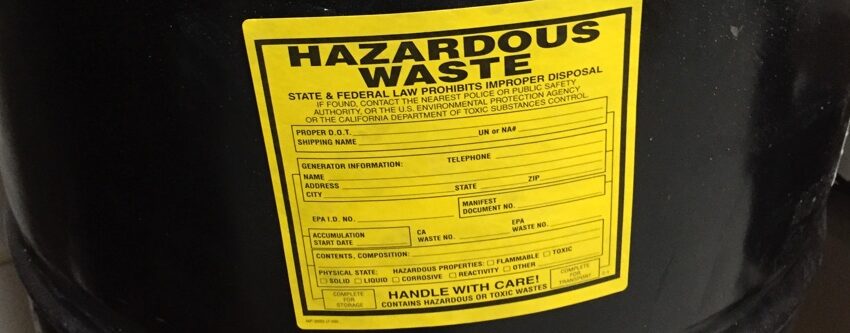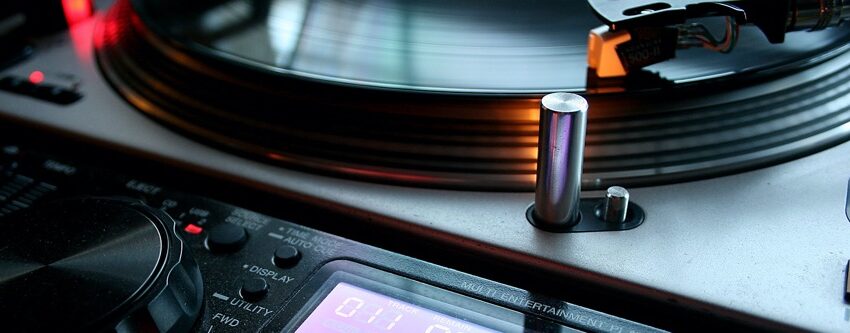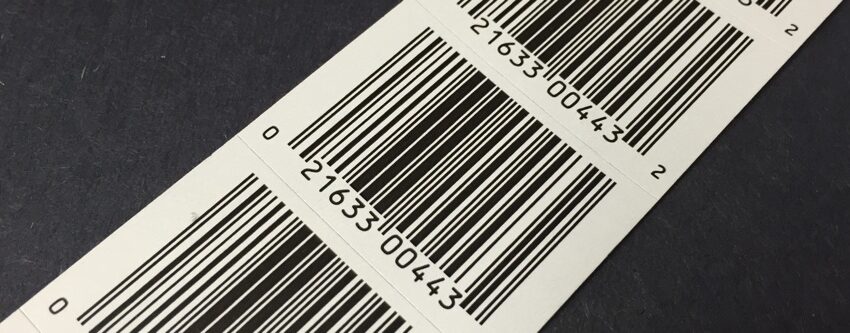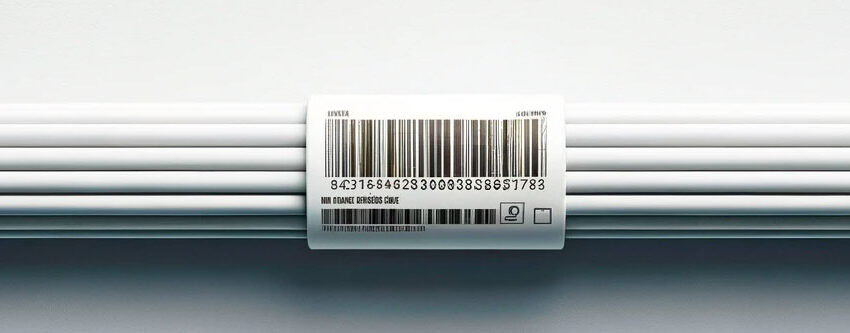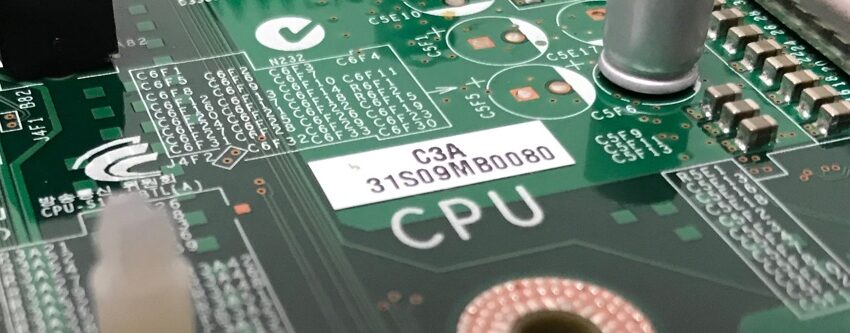PCB Labels & Circuit Board Labels
Custom PCB Labels
Coast Label works closely with industry-leading suppliers to provide you with a suite of custom label material options designed for PCB labels/circuit board labels to succeed in the printed circuit board (PCB) manufacturing environment. We custom die-cut and print out these high-temperature coated polyimide materials to provide you optimized tracking and identification label solutions.
The pressure-sensitive adhesives have been formulated to remain attached to PCBs and components through reflow and wave solder processes, as well as high-pressure washes. And if you have a special application, depending on your needs, we can help you select the best fit, as we have a range of options that include:
- Electrostatic discharge (ESD) safe materials that comply with the latest ANSI/ESD and JEDEC standards.
- Flame retardant label materials tested to flammability, and smoke standards including UL94.
- Coatings designed for increased ink adhesion without the need for a reflow oven to set the ink.
Capabilities of PCB Labels:
- Adhesives with strong Ultimate Adhesion
- High Durability construction
- Materials that provide High Resolution and White Contrast
- ESD Safe material options
- Flame Retardant material options tested to UL 94 VTM0
- Materials designed for specifically Non-Reflow soldering processes

What are Printed Circuit Boards (PCBs)?
Printed circuit boards (PCBs) can be found on the electrical components of a myriad of electronic devices and systems we use daily, including computers, cell phones, medical devices, and industrial equipment. These boards are the electrical power that runs the devices. PCBs are made up of many components, each of which is essential to the board operating correctly. They must be manufactured and installed with precision so they can work as intended.
What are PCB labels?
Circuit board labels are used for tracking the electrical components of PCBs through the entire production process, during storage, and during installation. This is to ensure that the right components are used in the right products and the boards are installed correctly. Printed circuit board labels contain critical information, such as serial number, model number, lot number, assembly number, test data, soldering temperature, and flux density. This information has to be available in an easily accessible format.
Why are PCB labels different from other labels?
A PCB component label needs to be highly durable to stand up to the rigors of the circuit board production process, which includes soldering, galvanization, high-pressure washes, flames, and high temperatures up to 1000°F (537°C). The labels require a special thermal transfer printer with high resolution as well because the labels are very small. The labels must be clearly legible throughout the product’s life.
Why PCB labeling is important
Labels are used on many manufactured components because the components must be traceable. This is crucial for tracking and recalls. Traceability is especially true of circuit board components, many of which are extremely small. Without a reliable labeling system, it would be extremely hard to keep track of every component.
Manufacturers need to know every part that is included in the assembly process and they need to make sure the right components are used every time. They also need to make sure no component is left out when building a circuit board, which can easily happen with very small parts. This is why circuit board labeling is critical to the manufacturing process and to increasing production efficiency.
Choosing the right materials for PCB labels
Circuit board labels are designed for long-term readability. If a label can’t be read, the PCB component can’t be tracked through the production process. This can result in manufacturing errors, wasted time, and wasted material. This is why our PCB labels are produced on specially designed printers, using materials that can withstand extreme temperatures, harsh chemicals, and other potentially damaging conditions. PCB labels can be made from a variety of materials.
The material you choose will depend on when the labels are applied, what conditions they will be exposed to, and the level of durability you need. Some common label materials include:
- Polyimide labels – Polyimide labels are used for labels applied at the beginning of the manufacturing process. The substrates and adhesives in Polyimide labels are resistant to high temperatures, which means they can withstand reflow and wave soldering operations.
- Polyester labels – Polyester labels are a good choice if the labels need to be durable. Polyester labels use substrates and solvent acrylic adhesives that can hold up when exposed to IPA cleaning chemicals.
- Paper labels – Paper labels are the least durable and have the weakest adhesives, which can dry out, causing the labels to fall off over time. We use these labels when the label doesn’t need to remain durable over time.
Circuit Board Component Identification Labels
Circuit board component identification labels are essential tools that help you keep track of the various components on your circuit boards. These labels are typically made from durable materials that can withstand high temperatures and resist solvents, making them perfect for use in electronic manufacturing and repair.
When you use these identification labels, you’re ensuring that every component on your circuit board can be quickly and accurately identified. This is particularly useful during the assembly process, where precise placement and soldering are critical. By labeling each component, you can streamline troubleshooting and maintenance tasks, as you can easily refer to specific parts without confusion.
We recommend using these labels in any situation where circuit boards are involved, such as in the production of consumer electronics, automotive systems, or even more complex telecommunications equipment. They are especially useful in environments where multiple technicians might be working on the same project, as they promote clarity and reduce errors.
We recommend using circuit board component identification labels not only to enhance operational efficiency but also to support quality control processes. By having a clear, labeled map of all components, we can ensure that every part is correctly installed and that any potential issues are noted at the earliest stage. This proactive approach minimizes the risk of costly errors and equipment failures down the line, boosting the reliability of your electronic products.
Circuit Board Labels From Coast Label
If you need PCB or circuit board component identification labeling for your business, Coast Label is here to help. Connect with us today to see how we can help your business with its labeling needs!
I’m happy that this process has gone more smoothly than I had first anticipated. You provide great guidance and explanation, which is critical for an order like this that’s so industry-specific and not easy to figure out!

